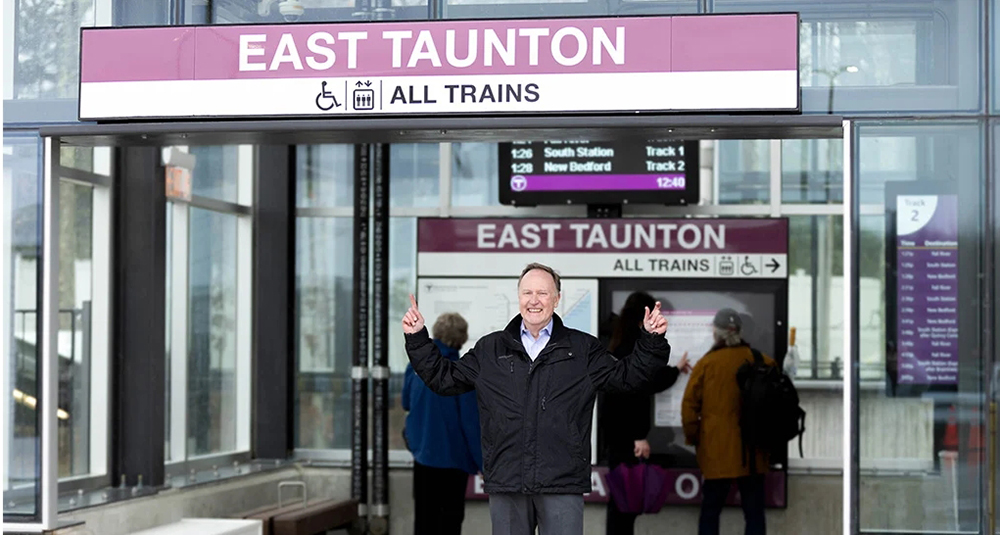News:
Spotlight Content
Posted: July 30, 2015
Boston is the Millennial City - This group accounts for over 34% of the city's population
Boston is a unique city with a tremendous potential. It is not surprising that the interest in this market among multifamily investors and developers remains very strong despite some signs that this cycle might be maturing. The sales volume of apartment properties has soared to $1.45 billion in the first five months of 2015 compared to $0.57 billion over the same period a year prior. Increased investor demand - particularly for assets within or near the central urban core, has pushed transaction cap rates for larger apartment properties down to 4-4.5% range with the year-to-date average price surpassing $250 thousand per unit, a new record for the market.
From the standpoint of institutional investor focus and pricing, Boston belongs to a tier of the so-called "primary" or "gateway" markets which include New York, Los Angeles, Chicago, Washington, DC and San Francisco. Each of these markets has all or most of the socio-economic, demographic, and real estate characteristics that are viewed as beneficial from the long-term multifamily income growth standpoint, such as large and diverse urban housing stock, low structural vacancy rates, robust and vibrant regional economies, highly educated workforce, higher wages, higher propensities to rent, higher shares of young population, and higher degrees of land use regulation.
Boston scores high on all these metrics but one that is particularly important in this cycle is the presence of population age 20-34, also known as the Millennials. This group accounts for over 34% of Boston's total population, the highest share among the major U.S. cities, and it is expected to continue growing over the next five years. Given the shifting age composition of the labor force, the Millennials will also drive a major share of the future growth in employment and apartment demand. In addition, Boston also has one of the highest concentrations of aging population living outside of the city now. This group is expected become another tour-de-force for multifamily, including condominiums. From this perspective Boston's outlook is supported by stronger demographic tailwinds compared to most other primary markets. Furthermore, with many Boston area seniors choosing to age in place and remain in close proximity to their children as well as high-quality health care, this will also support demand for service-oriented housing to meet their diverse needs including modern assisted living properties. Another key advantage for Boston is a relatively stable regional economy with a high concentration in professional and business services, health and education - industries which are also driving the nation's job growth today. Last year, the Greater Boston metro region (five-county area) added over 40,000 jobs, or 1.7%, and it is expected to continue this pace in 2015-16. This momentum should be sufficient to help absorb new supply that is bound to come online over the period given what is currently under construction.
Boston's multifamily market has expanded rapidly since 2010 and the average rent per unit for institutional-grade product is now above $2,000 per month compared to about $1,700 averaged in the previous decade. Increases in effective rents have been even more dramatic in the central urban core submarkets, averaging about 5% per year over the last five years with the average vacancy rates settling in 4-4.5% range, or 100-150 basis points below the long-term norm. New supply has finally started to respond more rapidly in recent years with multifamily permits issuance in Greater Boston averaging 6,200 units per year over 2013-2014. Most of these projects are professionally-managed apartments intended to meet the need for modern, communal living with more services and amenities that the Millennials and the empty-nesters seek in the urban core. While the concentration of new development in the city is likely to put some upward pressure on vacancy, the fundamentals should remain healthy. Assuming that new supply activity will begin to moderate after 2016, rent growth is expected to remain positive and average 3% per year with potentially higher rates in neighborhoods with concentrations of upwardly mobile and highly educated young professionals such as the Seaport District.
Long-term real estate investors are comfortable with low risk-adjusted returns when buying apartment properties in markets like Boston and this should continue to support premium pricing. Looking at the number of cranes towering above the city's skyline it would be prudent to ask not only if the market is building the right number of units relative to new demand, but also, if it is the right mix of product in terms of design and price. At the same time, understanding the market's changing age demographics and income profile can create great investment opportunities.
Chuck Leitner is chief executive officer and Gleb Nechayev is senior vice president, head of economic & market research at Berkshire Group, Boston, Mass.
Tags:
Spotlight Content
MORE FROM Spotlight Content
Check out the New England Real Estate Journal's 2025 Fall Preview Spotlight
NEREJ’s Fall Preview is Out Now!
Explore our Fall Preview Spotlight, featuring exclusive Q&As with leading commercial real estate professionals and in-depth byline articles on today’s most relevant market topics. Gain insight into the trends, challenges, and opportunities shaping New England’s commercial real estate landscape this fall.
Explore our Fall Preview Spotlight, featuring exclusive Q&As with leading commercial real estate professionals and in-depth byline articles on today’s most relevant market topics. Gain insight into the trends, challenges, and opportunities shaping New England’s commercial real estate landscape this fall.

Columns and Thought Leadership

How do we manage our businesses in a climate of uncertainty? - by David O'Sullivan
These are uncertain times for the home building industry. We have the threat of tariffs mixed with high interest rates and lenders nervous about the market. Every professional, whether builder, broker, or architect, asks themselves, how do we manage our business in today’s climate? We all strive not just to succeed, but

30 years on South Coast Rail: A journey to connect Southeastern Mass. with commuter rail - by Rick Carey
On March 24, 2025, a dream more than three decades in the making became a reality with the launch of the Massachusetts Bay Transportation Authority’s (MBTA) South Coast Rail commuter service. This milestone marks the completion of a project that overcame numerous starts and stops, including changes in leadership

How long should I hold a property for it to qualify as an investment property in connection with a 1031 tax-deferred exchange? - by Brendan Greene and Mark McCue
Internal Revenue Code (IRC) Section 1031 provides “No gain or loss shall be recognized on the exchange of property held for productive use in a trade or business or for investment if such property is exchanged solely for property of like kind which is to be held

Shallow-bay wins on 495/128: A renewal-driven market with a thin pipeline - by Nate Nickerson
The Boston industrial market entered mid-2025 in a bifurcated state. Large-block vacancy remains elevated, while shallow-bay along the 495/128 corridor continues to prove resilient. Fieldstone’s focus on this geography positions us squarely in the middle of a renewal-driven, supply-constrained










.png)
